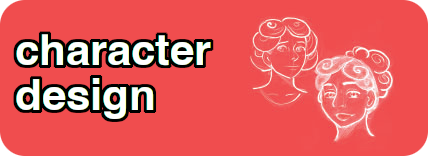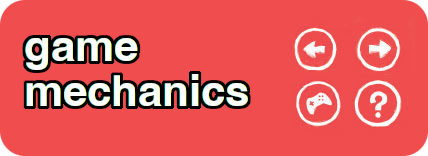You don’t need a laptop to design your game, as long as you have a pen and some paper you can start to put together ideas ~ then share them with us when we get together or tag @grrrlgames on social media.
Moodboard
Start by making a moodboard of ideas for your game! The buttons below will take you to tips about 9 areas of game development that we think you might like to think about. Click here to see examples of moodboards made at Grrrl Games workshops for Deeds Not Words in Bristol!
Tools
Next, choose a tool from the list below (or search for more on the internet!) and experiment with putting your idea into a game!
Tools for small games / beginners
Tools for medium games / intermediate
Tools for larger games / advanced
Resources
We’ve made a list of extra resources you might need! Click on the links below to go to tutorials and tips for each section.
Facts / theme
- What is your game about? Try searching on Wikipedia or going to the library to learn more about your subject.
Game mechanics
- To learn about what kind of game you might want to make, this quiz by Zoe Quinn is a great start!
- To learn more about game design in general, the Extra Credits YouTube series has videos on all sorts of subjects.
- If you are using Unity and want to learn how to build a game or how to code, Unity’s tutorials section has plenty of examples.
Art
- For pixel art, try this helpful tutorial by Derek Yu. This tutorial uses Photoshop, but you can apply it to any art software.
- For digital painting, you could try Krita. Here is a video tutorial series all about how to install and use Krita for painting.
- This guide contains a useful list of digital art tools you can use to make your art.
Animation
- Sophie Shepherd has written a blog on her workflow and animation process with is filled with inspiration!
- Here’s another blog post from Iona Dolidze on character animation.
Sound
- Freesound.org is a great resource for royalty-free sounds for your game
- The BBC sound library contains hundreds of high quality free sounds
- Sound Bible is also worth a look for sounds for your game!
- Record your own sounds using Voice Recorder on Windows, or download Audacity to record and edit sounds.
Writing
- Emily Short’s guide to interactive storytelling is a brilliant place to get started with writing in games and finding the right tools to use.
- This article by Clara Fernandez-Vara goes into more depth on narrative choices in games too.
Character design
- For visual reference when drawing characters, characterdesignreferences.com has loads of poses and anatomy guides for you to use.
Assets
- If you’re using Unity for your game, the Asset Store is a great place for in-game assets.
- If you want placeholder art that you’ll change later, a great tip is to use the Tools->Usage Rights filter in Google Images. Set it to ‘reuse with modification’ to filter for images with no licensing or copyrights.
- Open Game Art has a lot of game art assets.
- For 3D art, Turbo Squid is great!
Colour
- Make colour schemes according to colour theory with Adobe Color
- Generate a colour palette from an image with Palette Generator









